Gestalt Theory: Laws of Continuity and Figure Ground in Photography
VerifiedAdded on 2023/04/23
|15
|637
|332
Presentation
AI Summary
This presentation explains how Gestalt theory can be used to establish continuity in photography with the laws of figure ground and continuity. It discusses the concept of figure and ground relationship and how it affects perception. The presentation also provides an explanation of the laws and their application in photography.
Contribute Materials
Your contribution can guide someone’s learning journey. Share your
documents today.
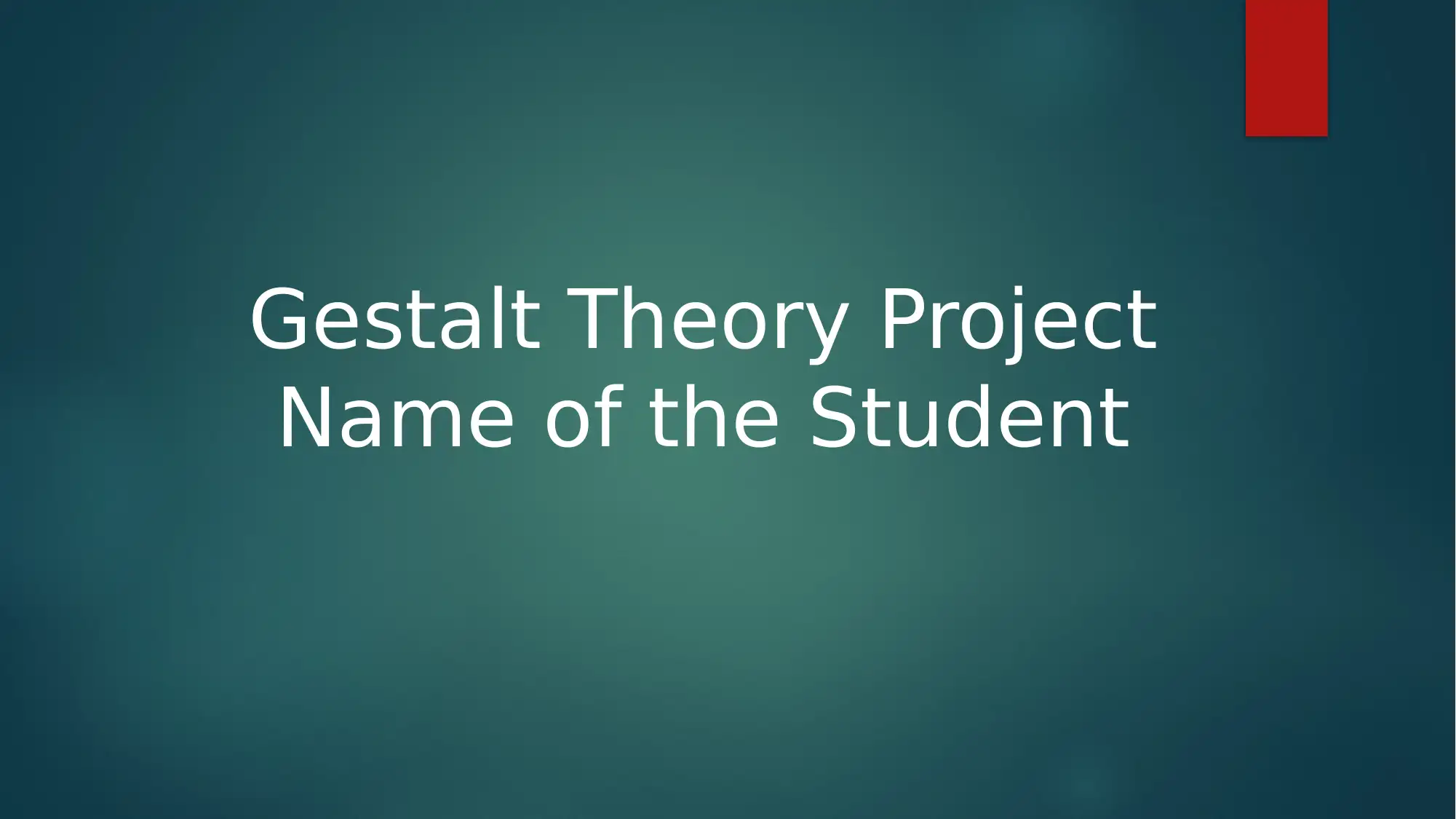
Gestalt Theory Project
Name of the Student
Name of the Student
Secure Best Marks with AI Grader
Need help grading? Try our AI Grader for instant feedback on your assignments.
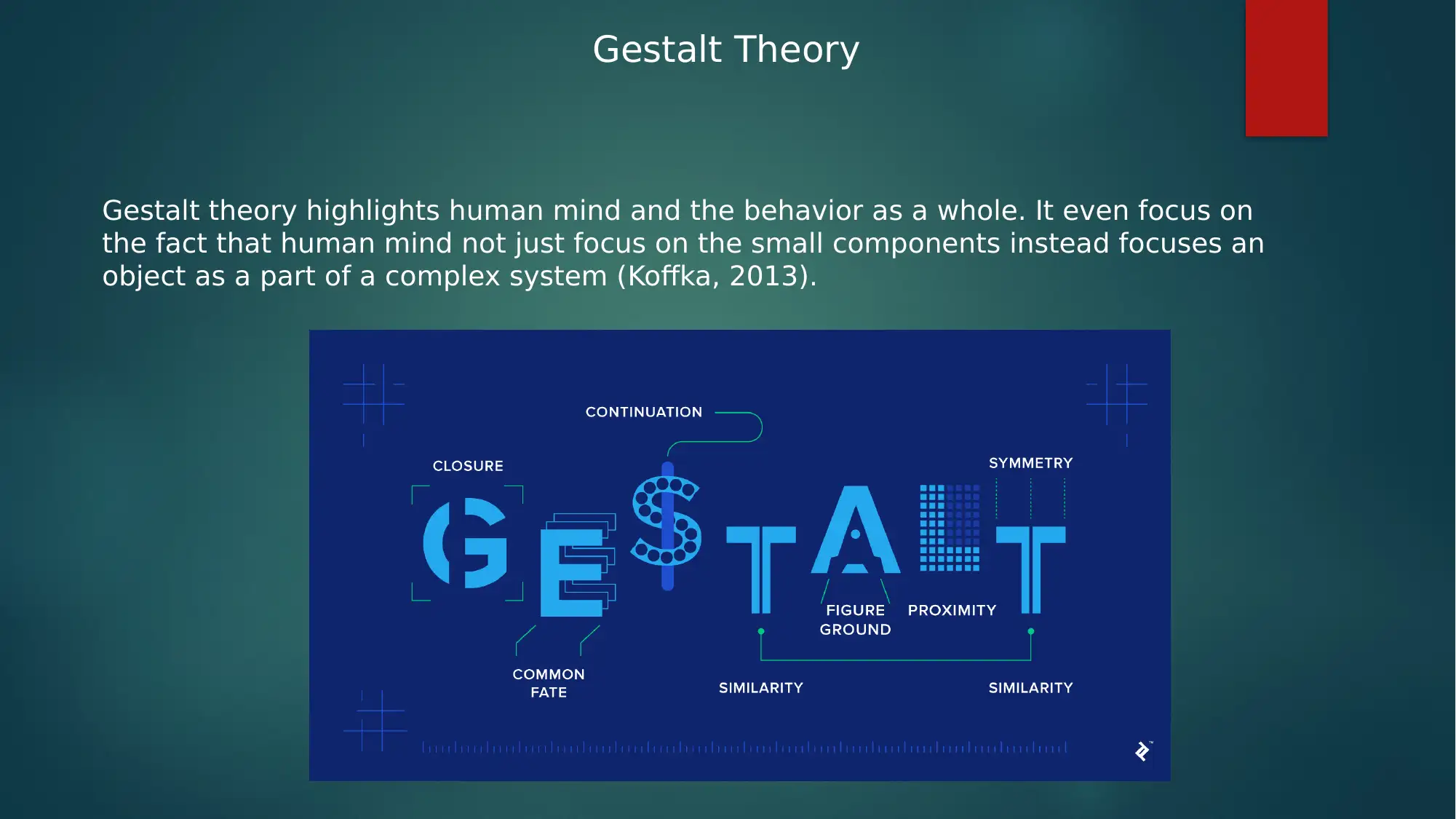
Gestalt Theory
Gestalt theory highlights human mind and the behavior as a whole. It even focus on
the fact that human mind not just focus on the small components instead focuses an
object as a part of a complex system (Koffka, 2013).
Gestalt theory highlights human mind and the behavior as a whole. It even focus on
the fact that human mind not just focus on the small components instead focuses an
object as a part of a complex system (Koffka, 2013).
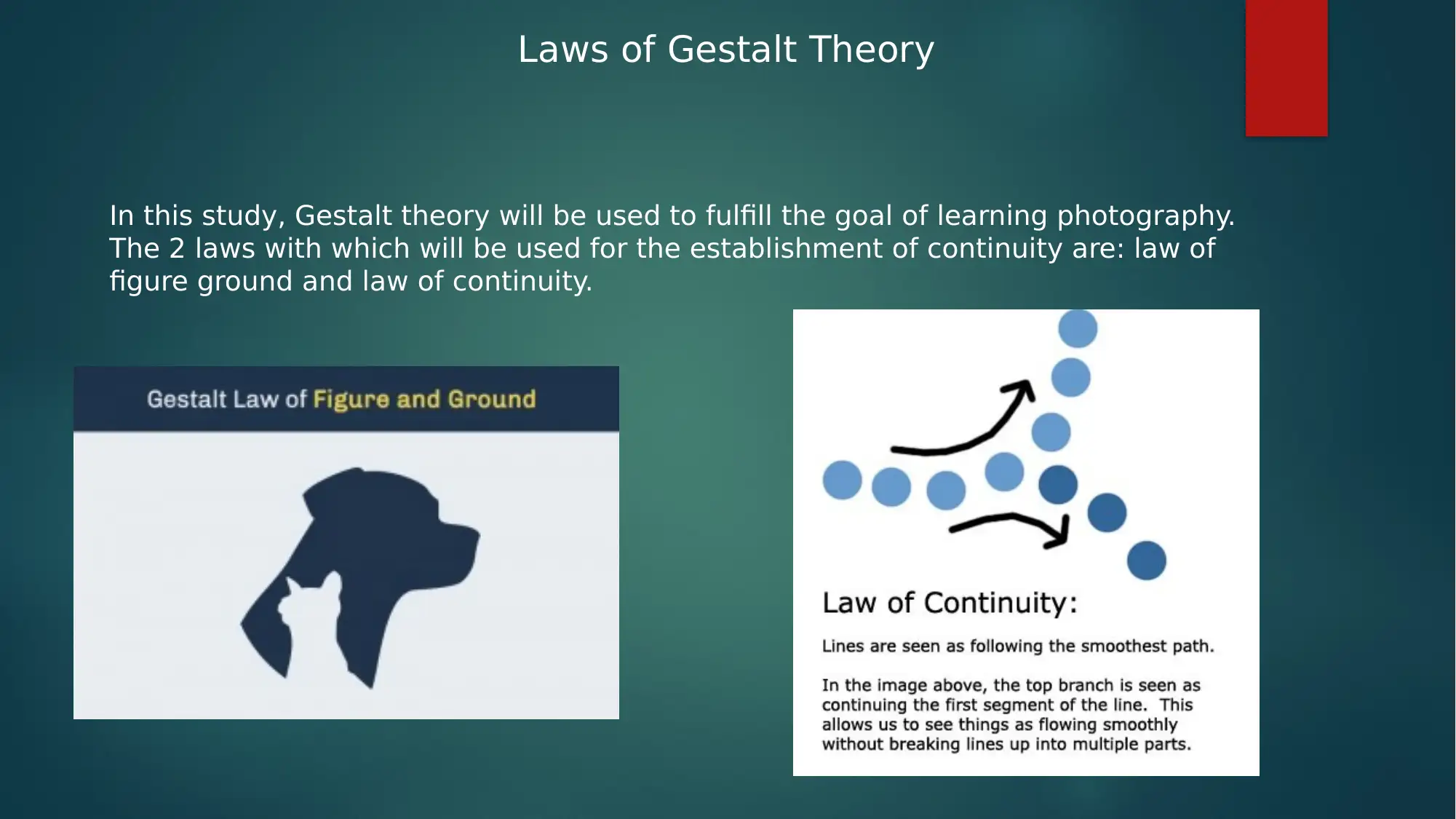
Laws of Gestalt Theory
In this study, Gestalt theory will be used to fulfill the goal of learning photography.
The 2 laws with which will be used for the establishment of continuity are: law of
figure ground and law of continuity.
In this study, Gestalt theory will be used to fulfill the goal of learning photography.
The 2 laws with which will be used for the establishment of continuity are: law of
figure ground and law of continuity.
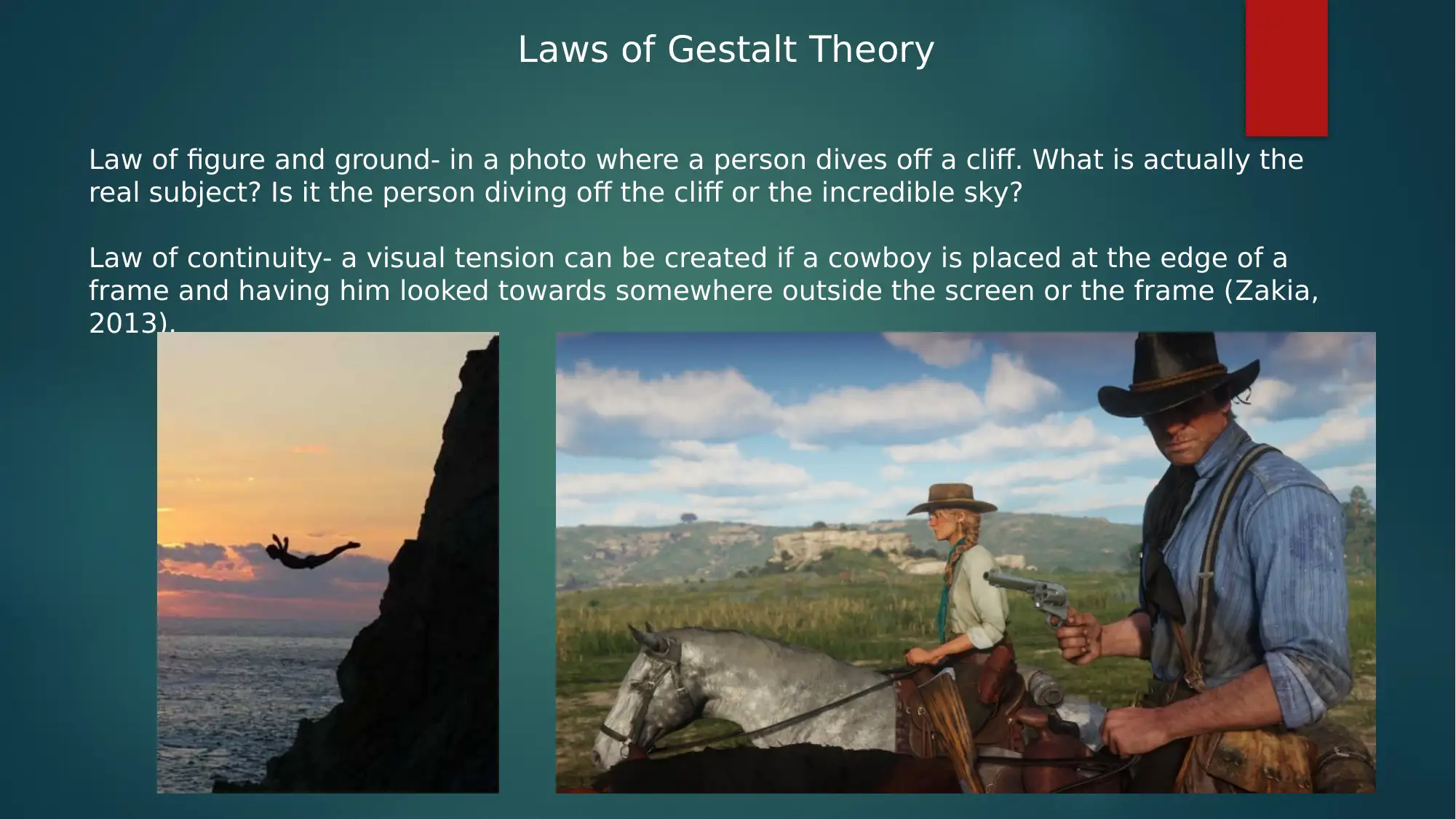
Laws of Gestalt Theory
Law of figure and ground- in a photo where a person dives off a cliff. What is actually the
real subject? Is it the person diving off the cliff or the incredible sky?
Law of continuity- a visual tension can be created if a cowboy is placed at the edge of a
frame and having him looked towards somewhere outside the screen or the frame (Zakia,
2013).
Law of figure and ground- in a photo where a person dives off a cliff. What is actually the
real subject? Is it the person diving off the cliff or the incredible sky?
Law of continuity- a visual tension can be created if a cowboy is placed at the edge of a
frame and having him looked towards somewhere outside the screen or the frame (Zakia,
2013).
Secure Best Marks with AI Grader
Need help grading? Try our AI Grader for instant feedback on your assignments.
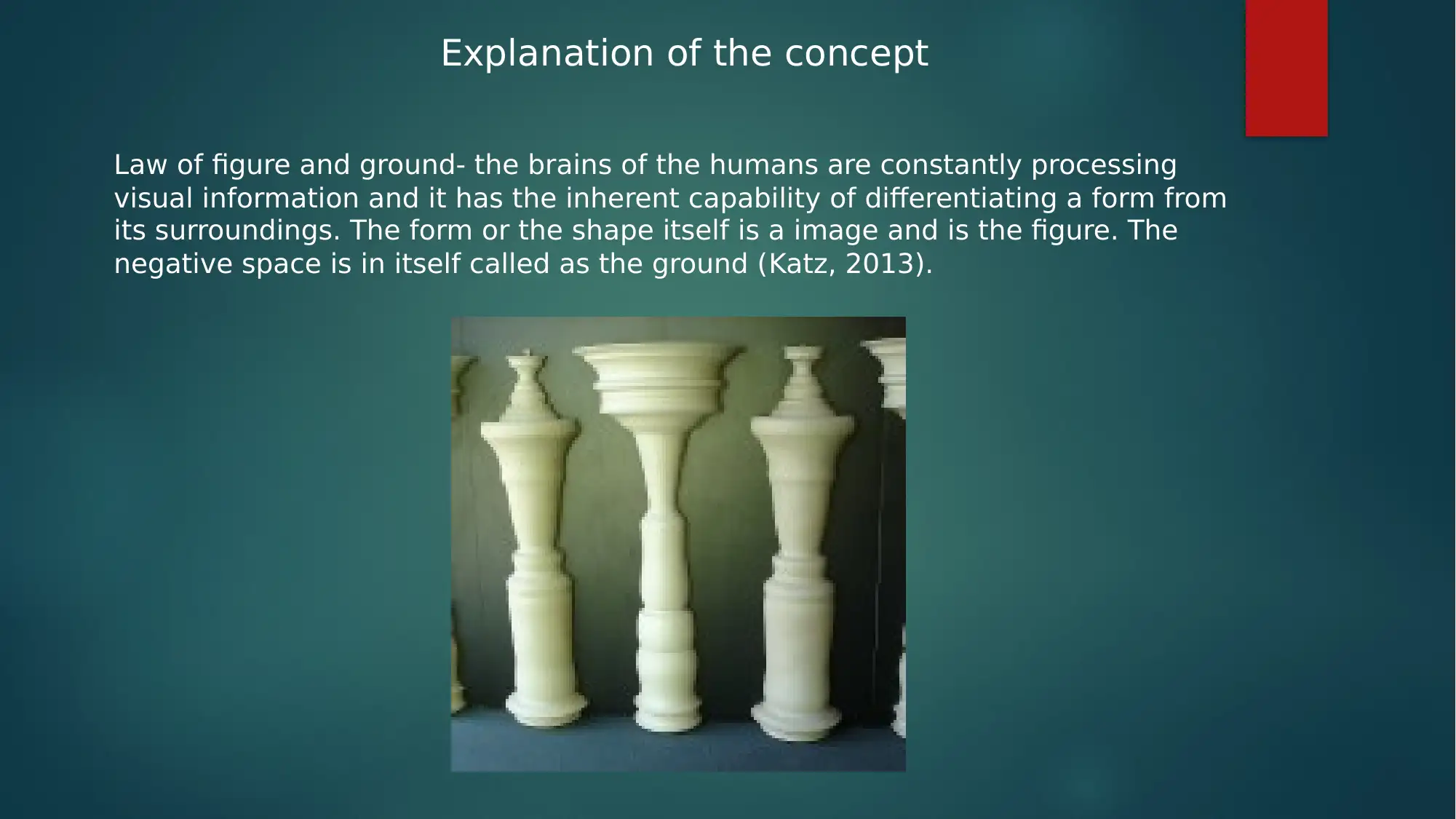
Explanation of the concept
Law of figure and ground- the brains of the humans are constantly processing
visual information and it has the inherent capability of differentiating a form from
its surroundings. The form or the shape itself is a image and is the figure. The
negative space is in itself called as the ground (Katz, 2013).
Law of figure and ground- the brains of the humans are constantly processing
visual information and it has the inherent capability of differentiating a form from
its surroundings. The form or the shape itself is a image and is the figure. The
negative space is in itself called as the ground (Katz, 2013).
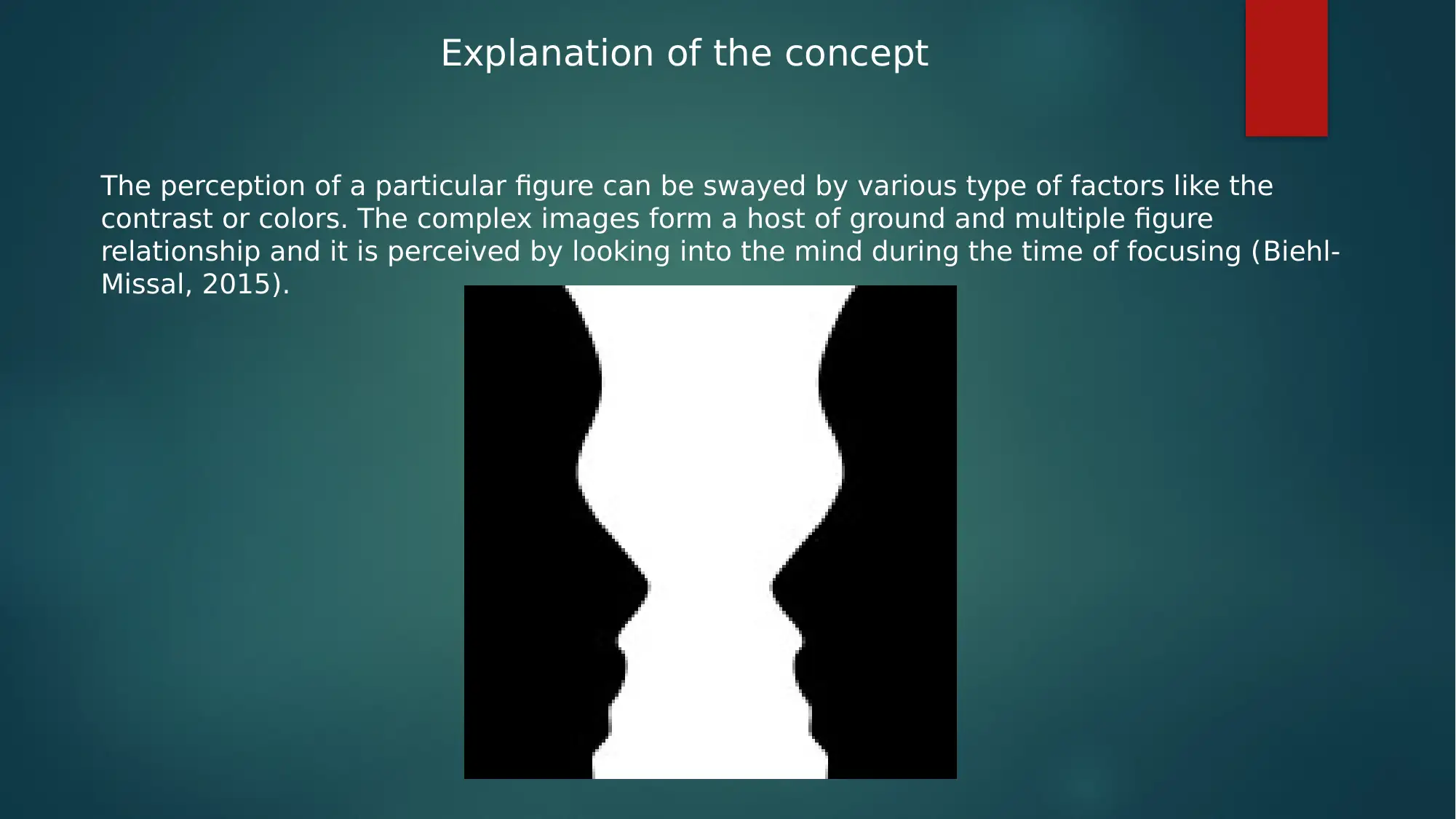
Explanation of the concept
The perception of a particular figure can be swayed by various type of factors like the
contrast or colors. The complex images form a host of ground and multiple figure
relationship and it is perceived by looking into the mind during the time of focusing (Biehl-
Missal, 2015).
The perception of a particular figure can be swayed by various type of factors like the
contrast or colors. The complex images form a host of ground and multiple figure
relationship and it is perceived by looking into the mind during the time of focusing (Biehl-
Missal, 2015).
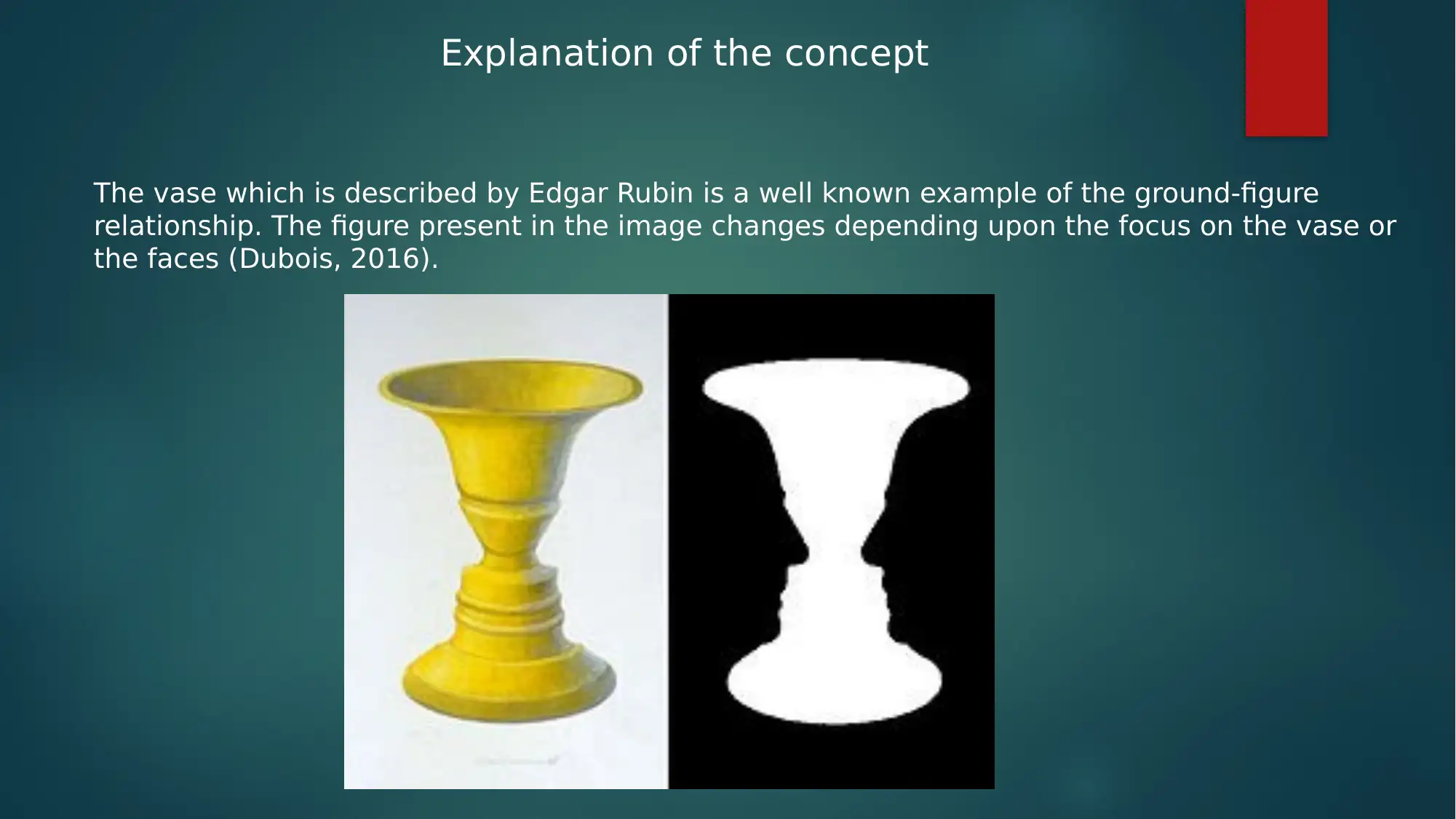
Explanation of the concept
The vase which is described by Edgar Rubin is a well known example of the ground-figure
relationship. The figure present in the image changes depending upon the focus on the vase or
the faces (Dubois, 2016).
The vase which is described by Edgar Rubin is a well known example of the ground-figure
relationship. The figure present in the image changes depending upon the focus on the vase or
the faces (Dubois, 2016).
Paraphrase This Document
Need a fresh take? Get an instant paraphrase of this document with our AI Paraphraser
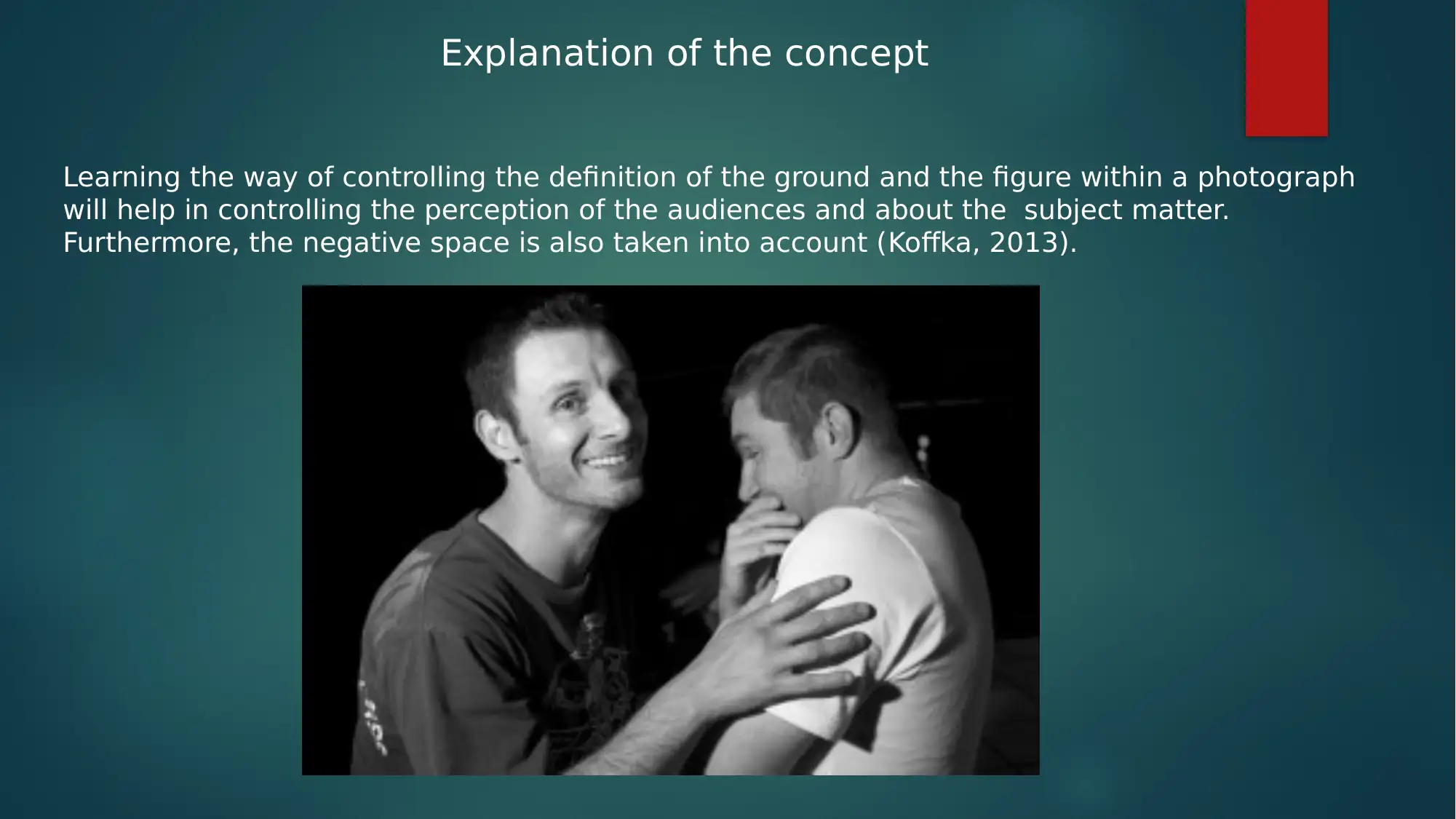
Explanation of the concept
Learning the way of controlling the definition of the ground and the figure within a photograph
will help in controlling the perception of the audiences and about the subject matter.
Furthermore, the negative space is also taken into account (Koffka, 2013).
Learning the way of controlling the definition of the ground and the figure within a photograph
will help in controlling the perception of the audiences and about the subject matter.
Furthermore, the negative space is also taken into account (Koffka, 2013).
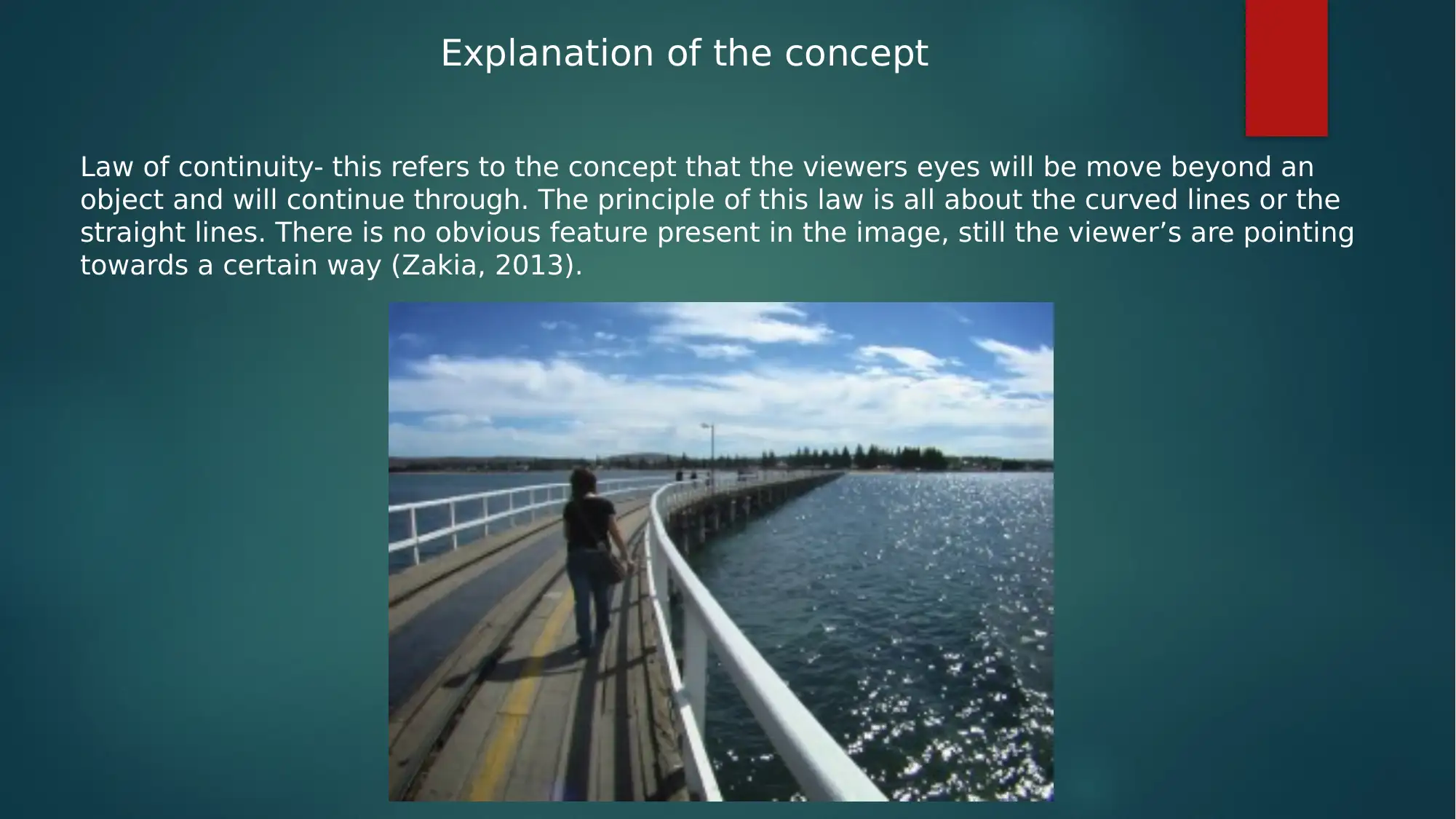
Explanation of the concept
Law of continuity- this refers to the concept that the viewers eyes will be move beyond an
object and will continue through. The principle of this law is all about the curved lines or the
straight lines. There is no obvious feature present in the image, still the viewer’s are pointing
towards a certain way (Zakia, 2013).
Law of continuity- this refers to the concept that the viewers eyes will be move beyond an
object and will continue through. The principle of this law is all about the curved lines or the
straight lines. There is no obvious feature present in the image, still the viewer’s are pointing
towards a certain way (Zakia, 2013).
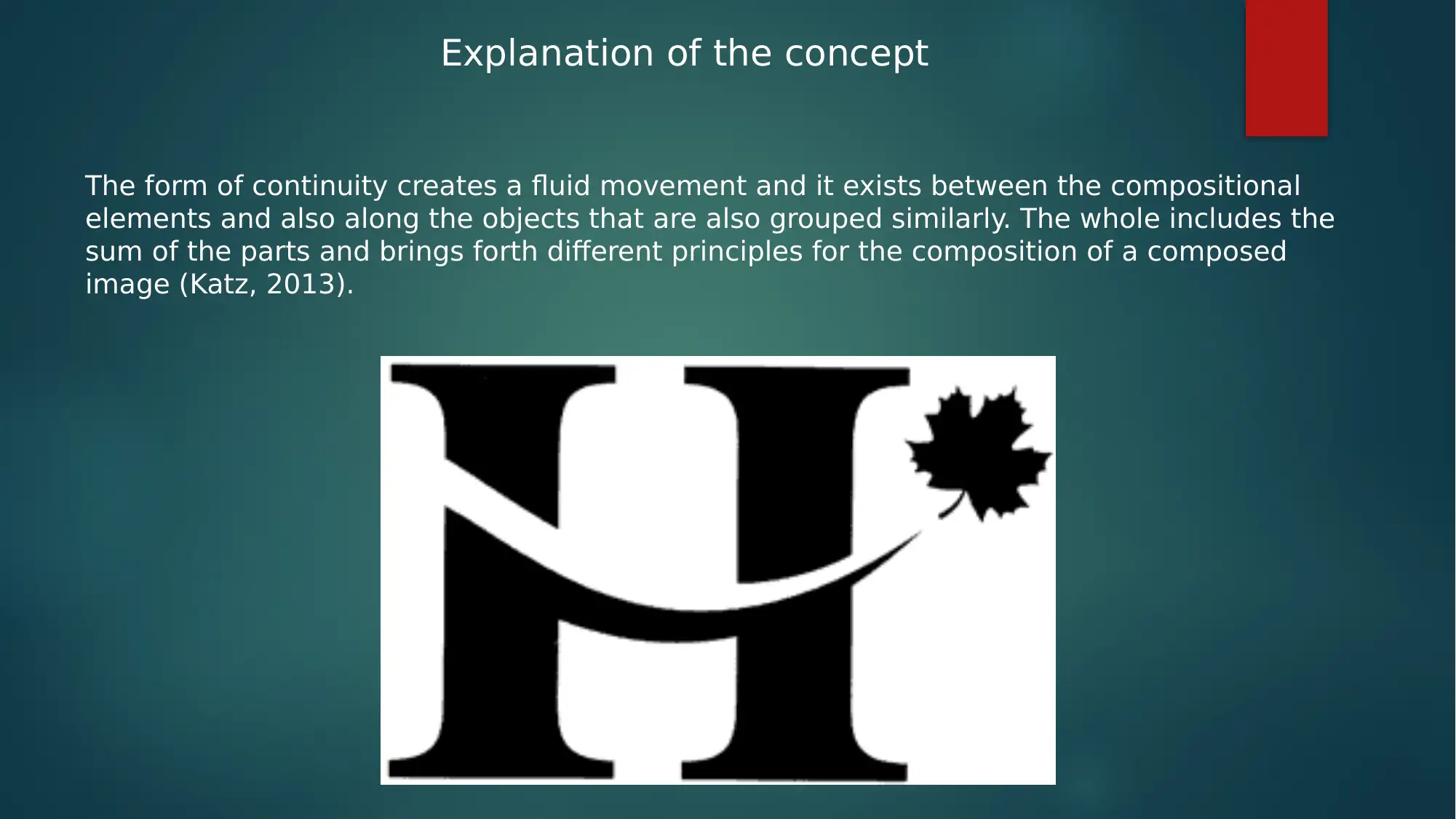
Explanation of the concept
The form of continuity creates a fluid movement and it exists between the compositional
elements and also along the objects that are also grouped similarly. The whole includes the
sum of the parts and brings forth different principles for the composition of a composed
image (Katz, 2013).
The form of continuity creates a fluid movement and it exists between the compositional
elements and also along the objects that are also grouped similarly. The whole includes the
sum of the parts and brings forth different principles for the composition of a composed
image (Katz, 2013).
Secure Best Marks with AI Grader
Need help grading? Try our AI Grader for instant feedback on your assignments.

Final product
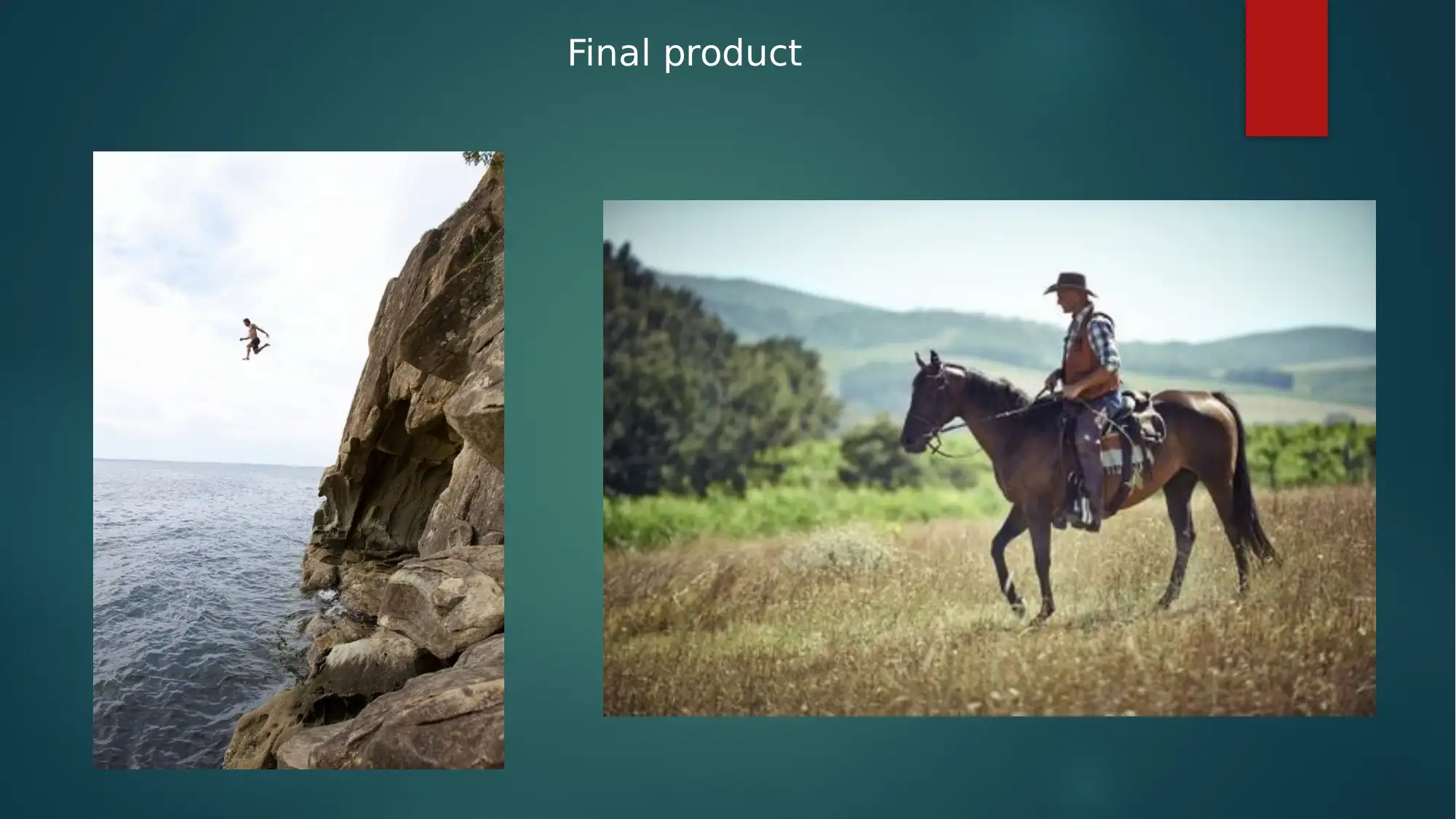
Final product
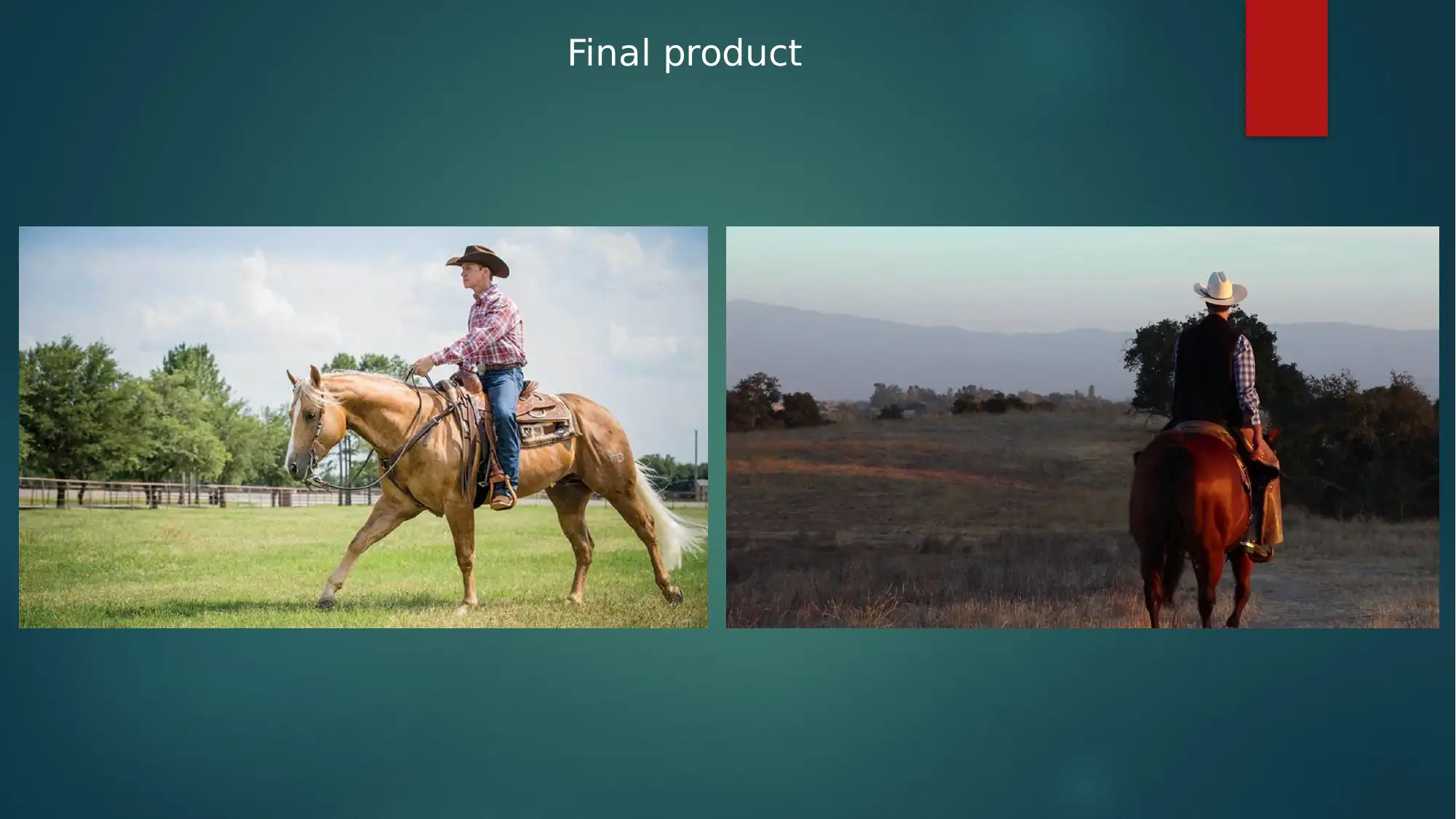
Final product
Paraphrase This Document
Need a fresh take? Get an instant paraphrase of this document with our AI Paraphraser
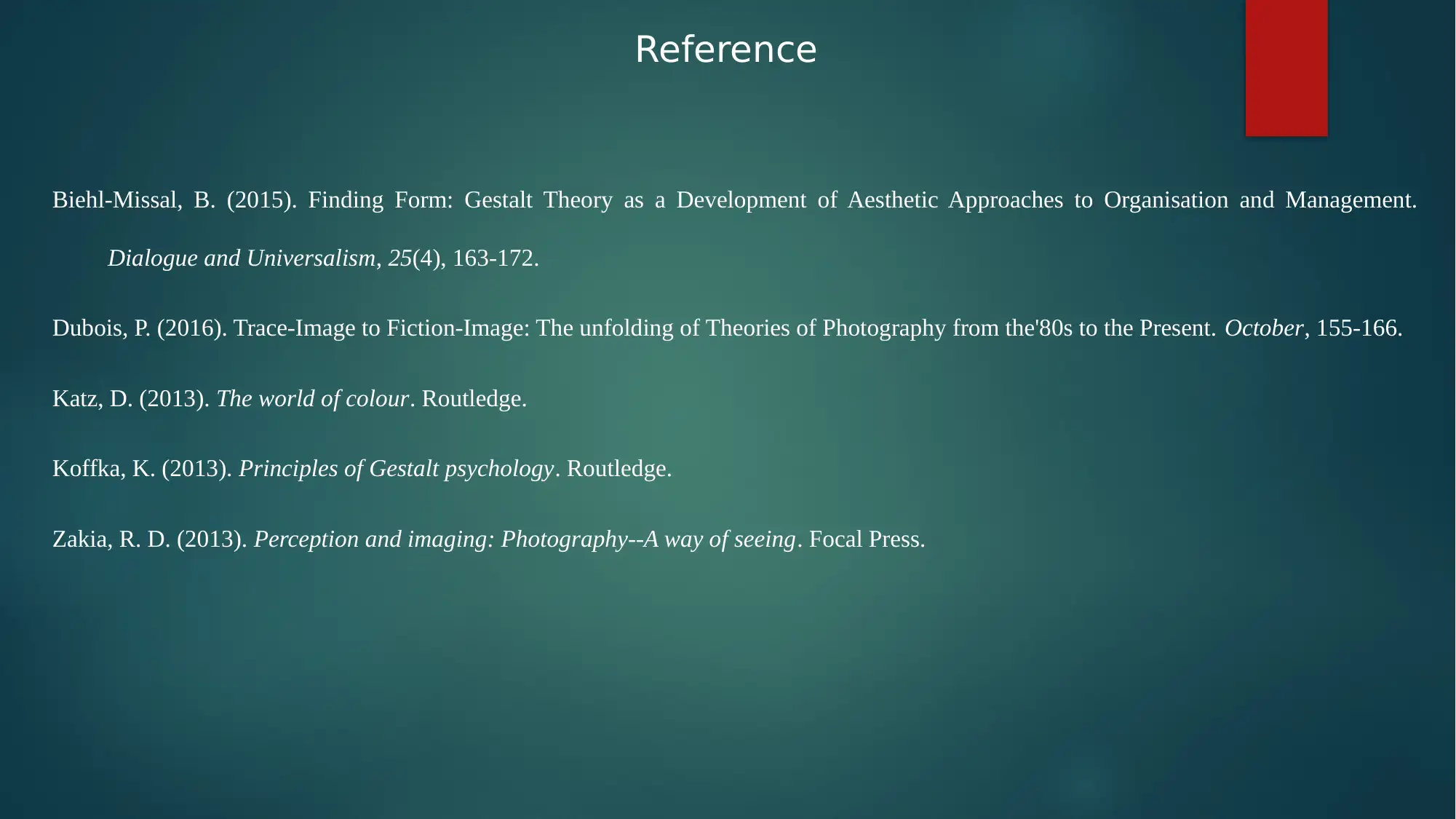
Reference
Biehl-Missal, B. (2015). Finding Form: Gestalt Theory as a Development of Aesthetic Approaches to Organisation and Management.
Dialogue and Universalism, 25(4), 163-172.
Dubois, P. (2016). Trace-Image to Fiction-Image: The unfolding of Theories of Photography from the'80s to the Present. October, 155-166.
Katz, D. (2013). The world of colour. Routledge.
Koffka, K. (2013). Principles of Gestalt psychology. Routledge.
Zakia, R. D. (2013). Perception and imaging: Photography--A way of seeing. Focal Press.
Biehl-Missal, B. (2015). Finding Form: Gestalt Theory as a Development of Aesthetic Approaches to Organisation and Management.
Dialogue and Universalism, 25(4), 163-172.
Dubois, P. (2016). Trace-Image to Fiction-Image: The unfolding of Theories of Photography from the'80s to the Present. October, 155-166.
Katz, D. (2013). The world of colour. Routledge.
Koffka, K. (2013). Principles of Gestalt psychology. Routledge.
Zakia, R. D. (2013). Perception and imaging: Photography--A way of seeing. Focal Press.

1 out of 15
Your All-in-One AI-Powered Toolkit for Academic Success.
+13062052269
info@desklib.com
Available 24*7 on WhatsApp / Email
![[object Object]](/_next/static/media/star-bottom.7253800d.svg)
Unlock your academic potential
© 2024 | Zucol Services PVT LTD | All rights reserved.
